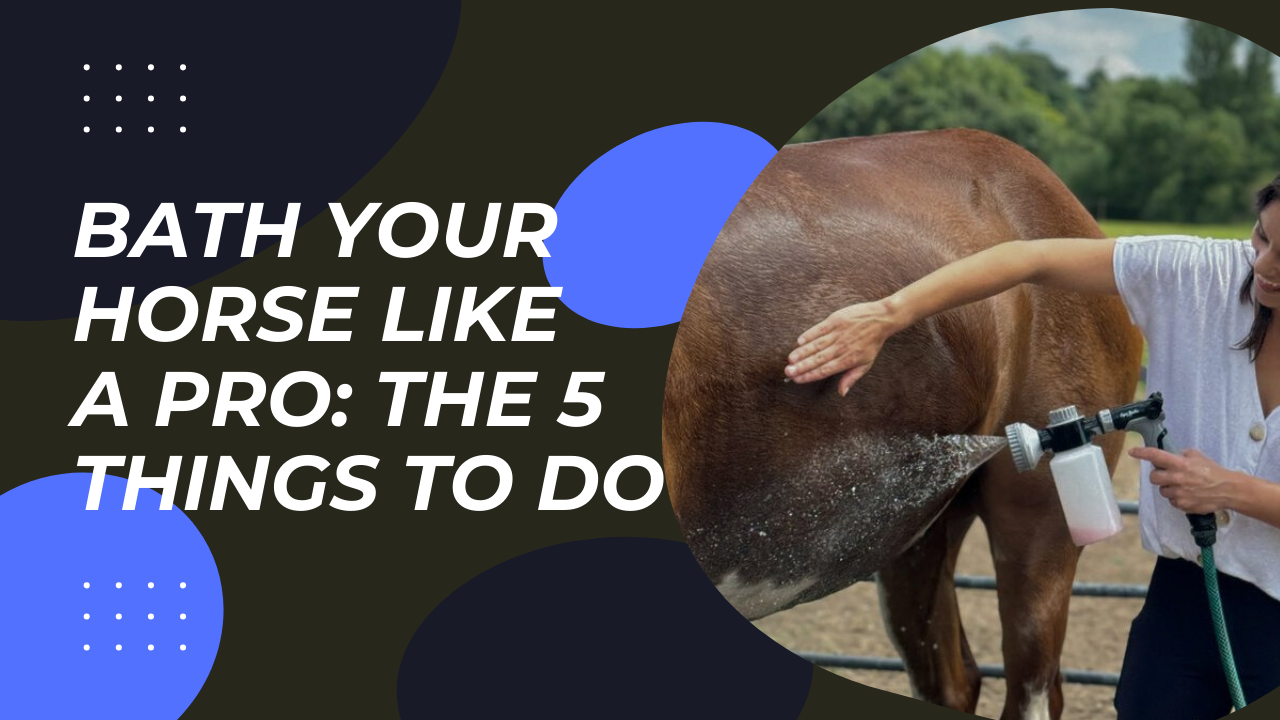Equine daily life is a roller coaster in mud, manure and grass. Horse after a while, need bathing to look desirable again. Usually, before a game or some outing event, you may need to bathe your horse. Do it like a pro and transform your 1,200-pound beast back to its gleaming show-ring looks.
Before any bathing routine commences, assemble your supplies. Assorted bath tools are key to correct horse bathing. The most important of these supplies is a shampoo and conditioner that is specifically adaptable to your horse. You will likewise need a hose with adjustable nozzle, a couple of buckets and a step stool. Also needed are rubber scrubbing mitt, a wooden scraper, 2 bath-size towels, and 4 big half-moon sponges for individual parts (the body, under the tail, for rinse water and for drying the legs). You may need a helper to hold down the horse if you are unable to tie the horse quietly.
Be mindful of the weather. When it is too cold, it is better carryout horse bathing under a sunny climate. Horses do suffer chill in cold weather. Also, when a horse is sick, let your veterinarian decide if bathing is permissible.
Below are the 5 things to do when batting your horse.
- Start with Grooming
Equine bathing session commences with full and proper grooming activities. You should brush the horse’s body and carry out all usual grooming routine to stir up and loosen dirt within its coat. Also, endeavour to take out the mud from your horse’s hoof walls and legs. When dealing with the tail, never stand behind the horse directly. Rather, stands beside the horse’s rump while reaching to the tail. If, by stimulus, the horse kicks, you will be out of harm’s way.
- Begin Wet Session
Wet session should start with washing of the horse’s face. This is necessary to start with because horses are sometimes sensitive to face washing. Squeeze off excess moisture from a sponge already soaked in warm water, then, wipe the horse’s face in line with the hair’s direction. Ensure you do not squeeze water into its eye so as not to upset the horse. Never apply shampoo on a horse’s face.
Next, use a hose to wet the horse’s entire body. Horses take time adjusting to wet session. You may start with the hooves and slowly direct water up. Afterward, with a clean cloth, wipe the sheath in male genital and around the anus of the horse. You may gently gentle sponge and rinse the sheath and penis area. And, irrespective of gender, for the anus, simply dampen the clean cloth with water and wipe it.
- Shampoo the Horse
Apply shampoo on the horse’s coat. Ensure to follow manufacturers direction of application. Horse shampoo is essential to horse bathing; it helps to address specific skin issues, add optical brighteners, enhance its colours etc. However, many horses have strong allergies. If you must apply a new and previously unused shampoo on your horse, perform first a small patch test on limited body area and study it for a day. If the horse’s skin remains reaction-free, then you may proceed with it.
After shampooing, start working on its coat. When done, rinse the shampoo completely off the horse’s body. Gently hose off the coat to rinse the coat repeatedly.
- Dry the Horse
Once the shampoo residue has been completely eliminated, dry the horse. Use a sweat scraper, moving it in the direction of its hairs to squeeze off the coat excess water. You may also wipe the horse entire body with several clean and dry towels. Next, walk the horse for about ten minutes in the sun or apply an anti-sweat sheet on the horse if it's clouded.
- Apply Appropriate Finish to it Mane and Tail
For finishing touches, apply a spray leave-in equine conditioner on the coat. This formula help eliminates knots and tangles, thereby providing extra conditioning benefits, adding a mirror finish to your horse’s coat.
